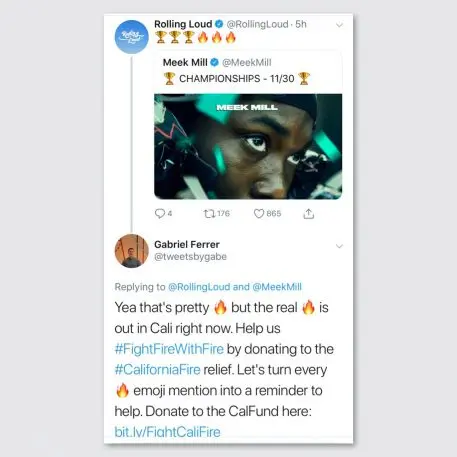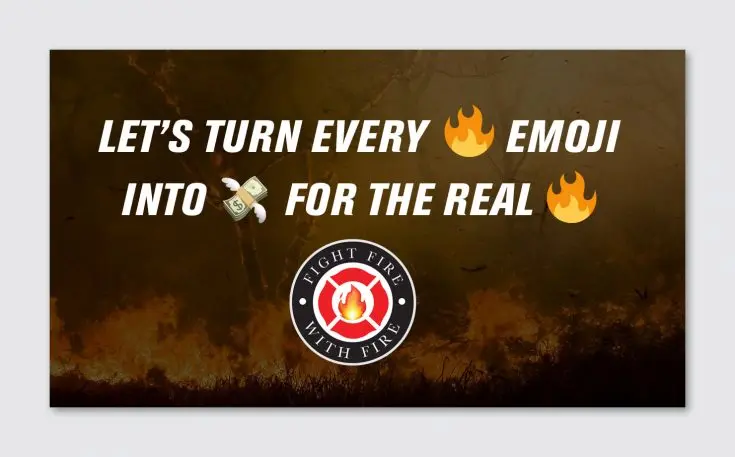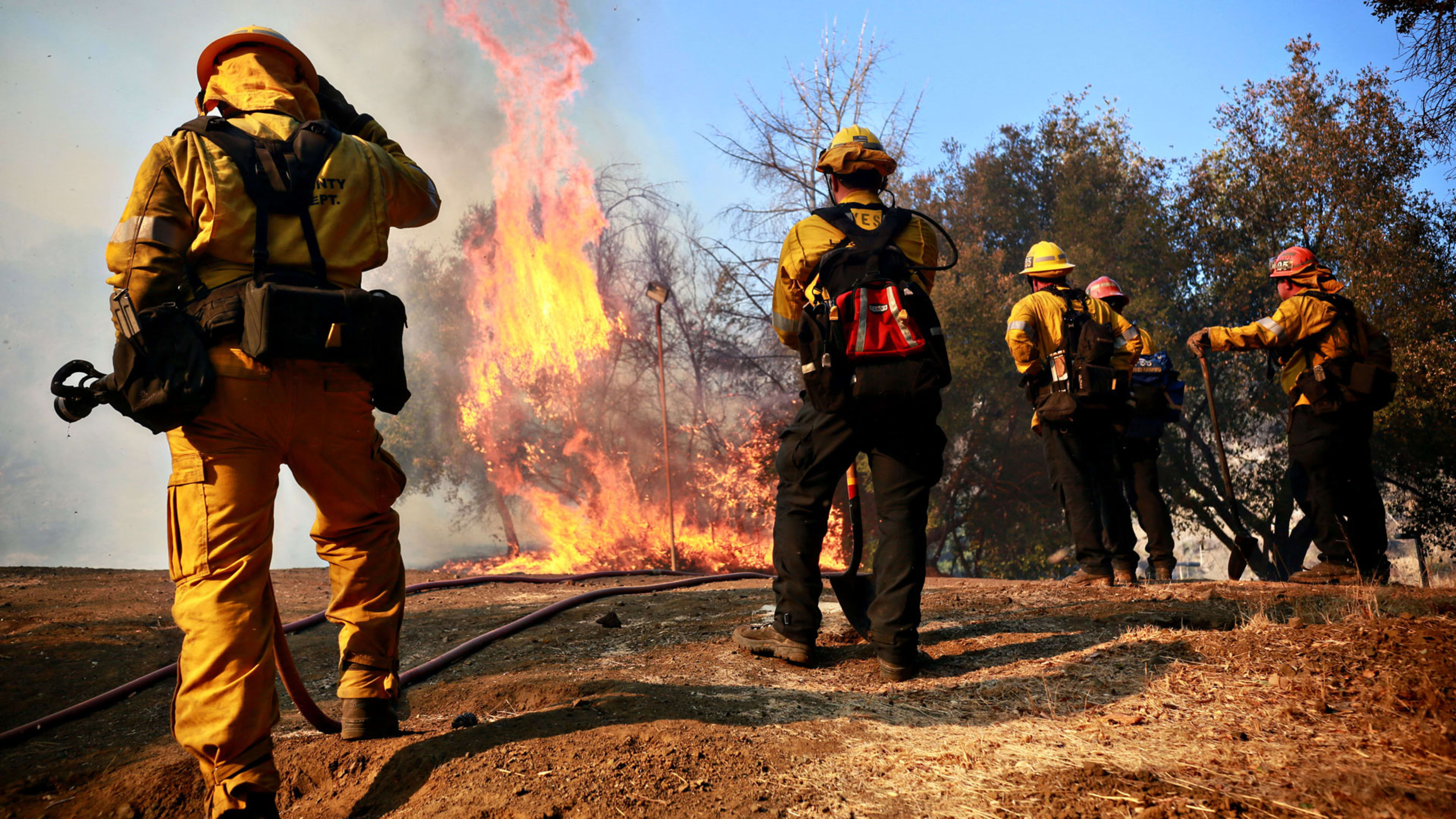Imagine, in your mind, the fire emoji: the signifier of all things hot on the Internet. But you know what else is fire right now? California, and in a terribly literal way, as the state continues to suffer from devastating wildfires that have left dozens dead, hundreds missing, and tens of thousands displaced from their homes.
A new charity movement on Twitter hopes to harness the power of that digital fire to assist those hurt by the real one. Starting last week, hundreds of people who tweeted messages containing the fire emoji began receiving replies from other users with the hashtag #FightFireWithFire and a link to donate to a Crowdrise page seeking $10,000 for the California Community Foundation.
Here’s one example:

Miami-based ad agency Alma DDB designed the pro bono campaign, which it hopes will go viral. As the message on the Crowdrise page reads: “We know fire is on your mind because the fire emoji is one of the most used emojis on the Internet. We want to turn your use of the fire emoji into a donation to fight the California Fires.”
But wait, they also spell it out in emoji.

The goal is to continue to keep victims, firefighters, and aid workers in mind by resetting social media’s short-lived attention span. “Yes, these sneakers are fire, this sports highlight is fire, this album is fire, but you know, there’s still a real fire out there,” says Ferrer, summarizing what he hopes will be the continuing train of thought, inspired by different kinds of shareable images and videos like the one below.
[Image: courtesy Alma DDB]At the same time, there have been some hiccups. Alma DDB’s volunteer crew initially created @The_FireEmoji, a Twitter handle to personify the icon and tweet directly at people using that same symbol, which is an easy thing to search for. Although the effort was for charity, the rapid volley of one-way messaging seems to have tripped a Twitter alarm, and the handle got disabled for several days. Technically, the group could have paid Twitter to target that message to a similar set of users, but Alma wanted the campaign to be free and more authentic.
By Monday, @The_FireEmoji appeared to be active again. But Ferrer and a handful of colleagues have since been tweeting people directly, including celebrities whose retweets would broaden their impact.
Alma DDB and Ferrer are no stranger to making things go viral. In 2016, Ferrer helped the agency architect “Help Kenya, not Kanye,” a fundraiser in opposition to musician Kanye West’s claim that he was $53 million in debt (or at least short that much, given what he wanted to accomplish artistically). To prove his neediness, West has made the offhand comment that he deserved it more than schools in Africa. Alma’s effort raised more than $10,000 for One Kid One World, a charity that works with impoverished school kids in Kenya. They even wrote a rap about their success.
As of press time, the #FightFireWithFire campaign has raised over $1,000, and the donations are steadily rolling in.
Recognize your brand’s excellence by applying to this year’s Brands That Matter Awards before the early-rate deadline, May 3.
